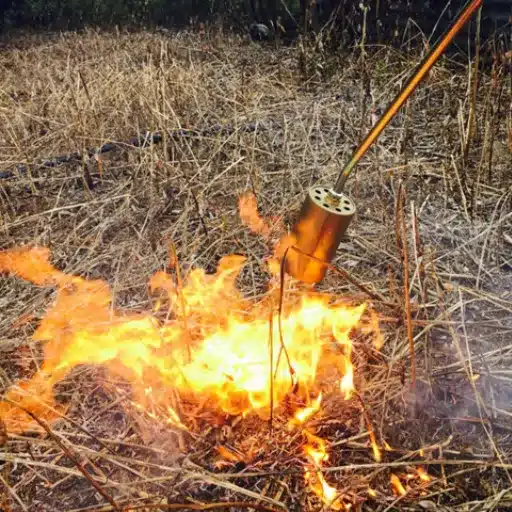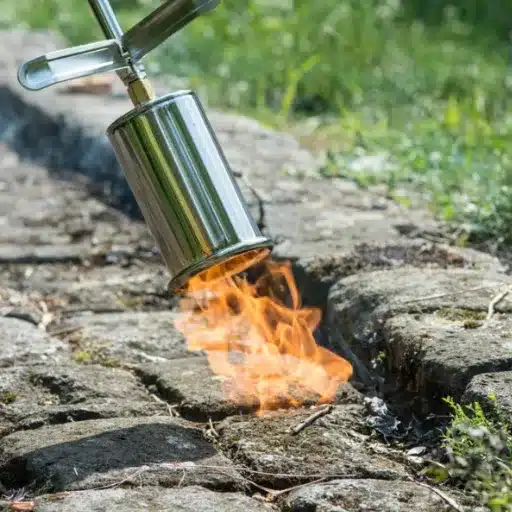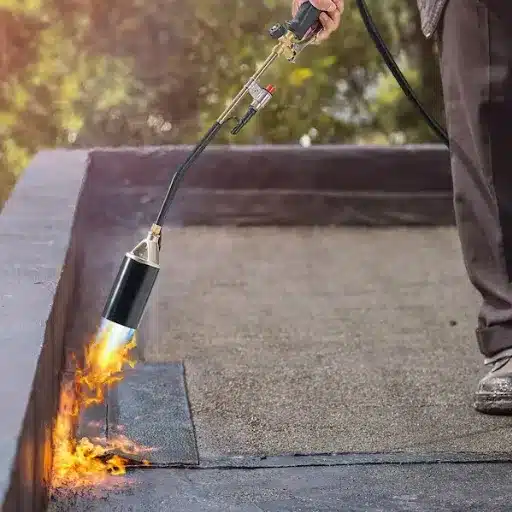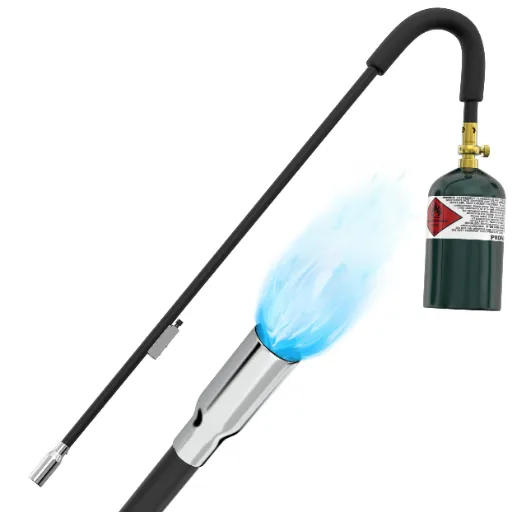Welcome to our ultimate guide on finding the best embroidery machine on sale, where creativity meets precision. Whether you’re a seasoned professional or an enthusiastic beginner, having the proper embroidery machine can transform your projects with ease and efficiency. In this blog post, we will explore the key features to consider when purchasing an embroidery machine, compare the available top models, and provide tips on maximizing your purchase. By the end of this article, you’ll be equipped with the knowledge to make an informed decision and seamlessly bring intricate designs to life. Let’s dive into the world of embroidery machines and unleash your creative potential!
How to Choose the Right Embroidery Machine?

Several factors should guide your decision when choosing the right embroidery machine. Firstly, consider your skill level and the machine’s ease of use, especially if you’re a beginner. Embroidery area size is another critical aspect; larger areas allow for more intricate designs. Check for built-in design options and connectivity features, like USB ports or Wi-Fi, to easily import additional designs. Compatibility with software and handling various thread types are also crucial. Lastly, review the brand’s reputation for reliability and customer support to ensure long-term satisfaction with your investment.
What Features Should I Look For in an Embroidery Machine?
When searching for the perfect embroidery machine, I prioritize versatility and convenience. An expansive embroidery field is a must, as it allows me to work on larger projects without constantly rehooping the fabric. User-friendly technology, like touchscreens and built-in tutorials, significantly eases my creative process, especially when experimenting with complex patterns. I also look for extensive design libraries and robust connectivity options like Wi-Fi or USB ports, which enable me to import designs and stay updated with new software features effortlessly. Finally, a machine’s durability and the availability of quality customer support are non-negotiables for me to ensure a reliable, creative companion over the long term.
Is a Brother Embroidery Machine a Good Option?
A Brother embroidery machine is a good option, renowned for its user-friendly designs and innovative features. Brother machines typically offer various options for skill levels, from beginners to advanced users. Essential technical parameters to consider include:
- Embroidery Field Size: Many Brother models offer spacious fields, like 5″ x 7″ or larger, which can accommodate more intricate designs without frequent fabric rehooping.
- Built-in Designs and Fonts: Models frequently come with hundreds of built-in designs and fonts, providing a comprehensive base for creative projects.
- Connectivity: USB ports and, in some models, Wi-Fi capabilities allow for easy design imports and software updates, adding to their versatility.
- LCD Touchscreen: A large, intuitive touchscreen interface facilitates easy navigation and design editing directly on the machine.
- Stitching Speed: Brother machines typically reach speeds of up to 650 stitches per minute, ensuring efficient project completion.
- Software Compatibility: Many Brother machines are compatible with design software like PE-Design, offering expanded creative possibilities.
These features make Brother embroidery machines a reliable and flexible choice for personal and professional work.
How Does a Sewing Machine Differ from an Embroidery Machine?
Both the sewing machines and embroidery machines might be used for the manipulation of fabrics, however, their uses and features are different. A sewing machine is most often used for the construction of cloth and quilting as well as for some other basic and complex stitching techniques. It is specifically meant for attaching fabrics using a number of different kinds of stitches, and general machine options available include adjustable stitch length, zigzag, and buttonhole options.
On the other hand, an embroidery machine is made to stitch decorative patterns onto cloth. In other words, the primary function of this machine can be described as multi-needle stitching, which focuses on decorating cloth with extra coating, which has different intricate designs/ patterns cut into it. The main technical differences include the following:
- Stitch Types: Sewing machines generally offer a range of basic stitches, whereas embroidery machines provide numerous decorative stitch options tailored for complex designs.
- Functionality: Sewing machines emphasize stitch quality and control for construction. Embroidery machines focus on design execution, requiring precise pattern replication.
- Embroidery Hoops: Only embroidery machines have hoops that secure fabric for precise design placement without movement.
- Design Memory and Software: Embroidery machines often have built-in memory and compatibility with design software, allowing users to import and store multiple patterns.
- Display Screens: Large LCD screens on embroidery machines facilitate detailed editing and previewing of designs.
- Automated Needle Positioning: Embroidery machines typically feature automated needle threading and positioning for efficient design creation.
Users can make informed decisions based on their specific sewing or embroidery needs by understanding these differences and corresponding features.
What Are the Benefits of an Embroidery-Only Machine?

An embroidery-only machine eliminates the difficulties of using a combination machine and focuses entirely on improving creativity. Besides, such machines usually have a larger embroidery area, which allows for more intricate designs. They also tend to incorporate many built-in designs and additional editing options, enabling greater design variability and detail. Because they do not have the added complexity of sewing features, they are more focused and more accessible to operate to create high-quality embroidery. Additionally, the maintenance associated with sewing functions is limited; therefore, people who want to concentrate on embroidery can do so without problems.
What Features Should I Look For in an Embroidery Machine?
While selecting an embroidery machine, focus first on the features that best fit your needs, especially if you are a beginner. Check that the interface is intuitive, the instructions are appropriate, and the embroidery area is large enough to accommodate heavy projects. Look for USB or Wi-Fi options for importing designs. Machines with a large selection of built-in designs and fonts can help enhance the creative aspect while adjusting the stitching speed may improve the control of projects. Ensure that the machine can use a variety of threads and can maintain the proper tension for easy stitching.
Is a Brother Embroidery Machine a Good Option?
Brother embroidery machines have a good reputation for reliability, user-friendliness, and features that can meet the needs of embroiderers of all skill levels. Additionally, they have great customer service and a wide variety of models available. Brother machines offer many built-in designs, easy-to-use interfaces, and helpful communities, which makes them a good investment. Almost all machines of this brand come with comprehensive manuals and instructional videos, which makes them a preferred choice for both novices and seasoned professionals.
How Does a Sewing Machine Differ from an Embroidery Machine?
A sewing machine is a tool dedicated to producing clothes or other fabric-related workpieces through the normal stitching process. Usually, it has basic stitches such as straight and zigzag. However, an embroidery machine is designed to create intricate designs and patterns and improve fabrics through decorative stitching. Sewing machines allow manual adjustments during installation, whereas embroidery machines aim to create deviated patterns through automated processes using predetermined software and functions. Combination machines exist, but dedicated embroidery machines are better suited for detailed embroidery works thanks to their more sophisticated capabilities.
Why Choose an Embroidery-Only Machine?
Choosing an embroidery-only machine ensures I have the specialized tools needed for creating detailed, intricate designs without the mixed functionalities of a combination machine. Such machines often feature advanced stitching speeds, larger embroidery fields, and robust design libraries, allowing me to expand my creativity without compromise. Additionally, investing in an embroidery-only model often means I get access to the latest technology and precise engineering focused solely on embroidery tasks, which can simplify complex projects and produce high-quality results.
Can an Embroidery Only Machine Handle Large Embroidery Projects?
Indeed, a machine that does only embroidery can do a reasonable amount of work because its features and functions are compelling. From the most credible sources I have consulted, these machines should be mounted on a large base as their whipping fields can stretch to 12” x 800 mm or even more. Exported items are also characterized by high embroidering speed – 650 to 1000stitches a minute, making them suitable for significant edition works. However, the more subtle and vital aspect involves the ample design memory space and the ability to connect external USB drives that facilitate convenience in handling files and pretty complicated designs. As a result, this equipment is more technically inclined to perform embroidery-only applications, which are widespread in many embroidery applications.
How to Maintain Your Embroidery-Only Machine?
The care of an embroidery-only machine is critical and involves several maintenance practices to facilitate its durability and efficiency. First, I make it a policy to eliminate the dust and lint from the bobbin area and adjacent parts after each project using a small special brush or vacuum cleaner meant for electronics. One of the most important practices is oiling, so I refer to the manufacturer’s guidelines to check where and how often I need to apply oils and how much is required. I also check my machine once a year, preferably by specialists, so that any complex mechanical changes are made if necessary. It is also notable that replacing a dull needle and examining the needle before starting to work with fabrics is crucial since this helps avoid fabric erosion and favors neckline stitching. I also ensure my program is constantly updated by visiting the manufacturers’ web pages or looking up manuals. These maintenance procedures assist me in ensuring that all aspects of my projects’ execution are of the best quality possible.
What Makes a Brother Embroidery Machine Stand Out?

Brother embroidery machines are known for their function, versatility, and easy-to-use features. Thanks to their sturdy construction and dependable performance, these machines are of exceptional quality and long-term durability. These machines are different because all their technologies are functional; they come with touch screens, wireless features, and various preloaded designs. They appeal to the recreational and professional markets by providing modest variations that permit customization of the stitching procedures. What is more, the excellent customer service and the myriad of online communities dedicated to these machines improve the general user experience by bringing solutions and creativity to the embroidery processes. The company continues to bring out new products and maintaining a high level of quality, the company has remained a dominant player in the embroidery machine industry for quite some time.
What Are the Key Features of the Brother Stellaire?
As a user of the Brother Stellaire, I find several standout features that enhance my embroidery projects. First and foremost, its expansive 9.5″ x 14″ embroidery area allows for more extensive design work without re-hooping, which is incredibly convenient. The machine has a large LCD touchscreen display that offers an intuitive interface, making navigating through designs and settings easy. It has built-in wireless LAN connectivity, enabling me to seamlessly transfer designs from my devices.
The Stellaire also includes the My Design Center feature, allowing me to create and edit my motifs directly on the machine. Moreover, it boasts advanced camera positioning technology, ensuring precise placement of designs on the fabric. It offers 727 built-in embroidery patterns, providing many creative options. It combines efficiency with quality with a maximum embroidery speed of 1,050 stitches per minute. These features, combined with Brother’s dedication to detailed craftsmanship, make the Stellaire an exemplary choice for intricate and expansive embroidery projects.
How Does the Brother Persona PRS100 Compare?
Both beginner and advanced embroiderers have something to smile about with the Brother Persona PRS100. Unlike the Stellaire model, the PRS100 is a free-arm embroidery machine, which makes it easier to embroider unconventional areas such as on caps or sleeves for the advantage of those who do not know the sewing machine well. The range, however, is slightly limited as the embroidery area is 8” x 8”, which can tackle several sizes but is smaller than what the expansive field of the Stellaire can provide. The PRS100 features a large LCD touchscreen, which makes interaction with the machine settings and designs quicker and likely more efficient.
For further details in the specifications, it can be said that the PRS100 has a maximum embroidery speed that can reach as much as 1000 stitches per minute (which is lower compared to the Stellaire) but provides smooth and precise stitching. The machine can use various machine embroidery formats and features, including up to 405 built-in designs, thus providing ample creativity. An LED pointer also assists the user in accurately placing the needle in the desired position. The PRS100 does not have a wireless option, but it is possible to connect the machine via USB to transfer designs directly to the device. There are benefits for each model: the PRS100 will provide benefits to those looking for versatile applications and those who want to work with smaller embroidery spaces, and the Stellaire to large and intricate designs.
Exploring the Brother PR680W Capabilities
The Brother PR680W is built with professional and advanced embroidering and sewing, but even great and complex items can still be personalized by hobby enthusiasts. What sets this model apart is its large 8” x 12” embroidery area, which allows more intricate designs to be created without any restrictions. Additionally, the PR680W has a maximum stitching speed of nearly 1,000 stitches per minute, which ensures quicker and more protective work performance despite the speed.
PR680W provides users with a simple and pleasant experience thanks to its 10.1″ touchscreen display, which allows for simple design modification and machine handling. This machine can incorporate as many as 763 built-in embroidery designs and be upgraded wirelessly through a LAN connection to a computer. Other technical characteristics are a unique intelligent camera positioning sensor for designs and a dual USB port for additional attachments and devices.
Due to these capabilities, the PR680W is ideal for controlling many aspects of connection, flexibility, and precision without having to switch machines when tackling various embroidery projects. The PR680W will fulfill your needs for power and delicate sewing, regardless of whether you’re crafting something for personal purposes or expanding your business with new embroidery production.
How to Create Custom Designs with Your Embroidery Machine?

Creating custom designs with your embroidery machine involves several key steps. First, select suitable embroidery software that is compatible with your machine. Software like Brother’s PE-Design allows you to create or import designs and modify them according to your preferences. Once your design is ready, transfer it to your embroidery machine using a USB stick or via wireless connectivity if supported. Prepare your fabric and stabilizers, ensuring they are secured in the embroidery hoop per your machine’s instructions. Before starting, selecting appropriate thread colors and embroidery settings is essential. Conduct a test run on scrap fabric to ensure everything is working as intended. After successful testing, you can embroider the design on your chosen fabric, closely monitoring the process for any adjustments. Finally, once the embroidery is complete, gently remove the fabric from the hoop and trim any loose threads to finish your custom design.
How to Use Built-in Designs?
Using built-in designs on my embroidery machine is a straightforward process. First, I access the machine’s built-in library, which offers a variety of pre-installed patterns. I navigate through the options available on the touchscreen display, selecting a design that suits my project needs. Once I choose a design, I can customize it directly on the machine by adjusting size and orientation or combining multiple designs. After setting the desired customizations, I prepare my fabric, securing it in the embroidery hoop with stabilizers. After loading the correct thread colors, I begin the embroidery process. I keep an eye on the machine as it works to ensure the design is stitching out correctly. Once completed, I carefully remove the fabric from the hoop and touch up the final product if necessary. This approach saves time and simplifies creating beautiful embroidery projects without needing external design software.
What Tools Can Enhance Your Embroidery Project?
On the other hand, a few tools can be convenient when enhancing my embroidery project. For instance, an embroidery stabilizer is essential because it assists in holding a variety of fabric types to reduce fabric puckering and create neat stitches. The second important tool is a quality embroidery hoop, which helps keep the fabric taut and in position during the stitching process. In addition, I use scissors made explicitly for embroidery to cut threads without cutting the fabric. I also like to be able to use different types and sizes of needles when working with other fabrics and threads. In addition, using a specific bobbin thread for embroidery can enhance the quality of the stitches and ensure proper tension. Finally, my creativity is enhanced by using embroidery software that enables me to easily design and edit patterns. These tools will also allow me to create beautiful embroidery works professionally with perfection.
Tips for Using USB Connectivity for Embroidery Designs
There are a few practical guidelines when transferring embroidery designs through USB that will ensure an optimal user experience. First of all, please make sure that the embroidery machine is USB enabled and can read the file formats you wish to upload, .PES, DST, and . EXP are the most widely recognized. Ensure the USB Flash Stick has adequate memory—most flash drives averaging 4GB to 32GB can hold many design files. It is also important to format the USB Stick in a file system acceptable to the embroidery machine, for example, FAT32, so that the machine can read the USB. Always make copies of the primary design files into another storage system to avoid losing files. While uploading designs, properly unmount the USB from the computer to prevent damage to the files. Finally, arranging specific designs in folders will simplify the uploading process; therefore, repetitiveness in how the machine is programmed will be reduced. These tips will improve your efficiency and creativity in embroidery projects using USB connectivity.
Are There Affordable Embroidery Sewing Machines Available?

Affordable embroidery sewing machines have made the activity more possible for hobbyists and professionals without spending much money. Brother and Singer are well-known companies that manufacture affordable entry-level models with the necessary features for basic embroidery needs. Most of these machines come in several designs, stitches, simple operations, and adequate hoop sizes suitable for most small to medium-sized projects. It is crucial to consider features specific to the machine and read reviews to ensure it performs the intended task and is within the budget. Going deep into research and deciding to purchase older or refurbished models also creates chances of buying a renowned embroidery sewing machine at lower prices.
Where to Find Sewing and Embroidery Machine Sales?
In general, when I look to place orders for sewing and embroidery machines, my first port of call is always Amazon due to the sale of many items and competitive prices. It is also easy to find the best prices and customer reviews of the products. After that, I tend to visit the pages of Joann Fabric and Craft Stores since they are likely to have certain traits, such as sales and discount coupons, that can apply to sewing machines. Finally, I go to the direct sites of Brother USA or Singer to check for available promotions, bundles, or certified refurbished machines. These methods assist me in locating excellent discounts and allow me to buy a machine that is suitable for my requirements at a reasonable price.
What Are the Best Budget-Friendly Options?
When considering the best budget-friendly options for embroidery sewing machines, I found that the Brother SE600 is frequently recommended. It offers a 4”x4” embroidery field, an LCD touchscreen display, and 80 built-in designs, making it a versatile choice for beginners. Another option is the Singer SE300, which features a larger embroidery area of up to 10.25”x6”, 200 built-in designs, and USB capability for importing designs, providing ample opportunity for creativity at a reasonable price. Lastly, the Brother PE535 stands out with its 4”x4” embroidery area, 80 built-in designs, and user-friendly interface, perfect for those starting in embroidery without breaking the bank. These machines are typically praised for their balance of features and affordability and are consistently highlighted on trusted sites for beginners looking to invest in embroidery.
How to Evaluate a Machine That Offers Multiple Functions?
When considering a multifunctional machine, some critical aspects should be regarded to avoid wasting time and resources. First, the number of functions and the quality of their tasks. Here, it includes sewing, embroidery, automated buttonholing, and other functions required for the use at hand. The following parameter is usability, which features like touchscreens, friendly interface, and various adjustable parameters can determine. Again, some other features include technical aspects such as maximum sewing speed (in stitches per minute), the dimensions of the embroidery area, and the number of built-in designs and stitch patterns. Another such aspect is the machine’s capability to use additional accessories and software for enhancement and expansion options. Finally, check for age and overall satisfaction using the VG scale and expert reviews from reputable places like Consumer Reports, Wirecutter, and Sewing.com. This information, when considered, enables the choice of a multifunctional machine as required.
References
Frequently Asked Questions (FAQ)
Q: What are the benefits of buying embroidery machines on sale?
A: Purchasing embroidery machines on sale can provide significant cost savings. This allows you to access high-quality machines like the Janome Memory Craft 550e or the Brother SE1900 at more affordable prices. This is a great opportunity to invest in advanced features like built-in stitches and computerized capabilities without breaking the bank.
Q: How do single-needle embroidery machines differ from multi-needle embroidery machines?
A: Single-needle embroidery machines, such as the PE800 and SE700, are generally easier to use and are suitable for hobbyists or small projects. Multi-needle embroidery machines, like the BAI The Mirror Embroidery Machine, are ideal for commercial use, offering faster speeds and the ability to handle multiple threads simultaneously for complex designs.
Q: Are there any financing options available for purchasing embroidery machines?
A: Many retailers offer financing options to make purchasing embroidery machines more accessible. This allows customers to spread the cost over some time, making it easier to invest in durable machines like the Janome or Brother models.
Q: What should I consider when choosing an embroidery machine for monogramming?
A: When selecting an embroidery machine for monogramming, consider features such as font styles, built-in stitches, and frame options. Machines like the Brother SE1900 offer a wide selection of fonts and designs, making them ideal for creating personalized monograms.
Q: How can I ensure my embroidery machine is easy to use?
A: Look for features like an automatic needle threader, a user-friendly interface, and comprehensive manuals. Models such as the Brother SE2000 and the PE900 are designed for ease of use, making them suitable for both beginners and experienced users.
Q: What types of projects can I complete with a combination embroidery machine?
A: Combination embroidery machines, like the Brother SE1900, allow for both sewing and embroidery projects. You can create everything from simple embellishments to elaborate garments, benefiting from features like extra-large frames and a wide range of built-in stitches.
Q: Are there any specific brands known for their durable embroidery machines?
A: Brands like Janome and Brother are renowned for producing durable embroidery machines. Models such as the Janome Memory Craft 550e and the Brother SE1900 are famous for their robust construction and reliable performance.
Q: What is the role of the presser foot in embroidery machines?
A: The presser foot in an embroidery machine helps hold the fabric in place while stitching, ensuring precision and consistency. Machines with adjustable presser foot pressure, like the Poolin EOC06, provide greater control over fabric types.
Q: Can I find embroidery machines with built-in stitch designs?
A: Yes, many embroidery machines come with built-in stitch designs. For example, models like the Brother PE800 offer 125 built-in designs, allowing users to create intricate patterns immediately without needing additional software.









